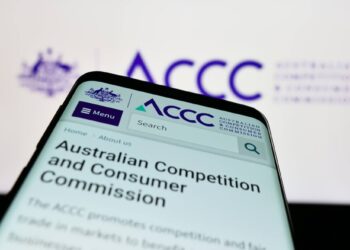If every asset has its season, then Damon Taylor writes that alternative investments came into their own as superannuation funds sought to emerge from the deep winter of the global financial crisis – and the sun continues to shine.
If any one asset class has received greater attention in the wake of the global financial crisis than any other, it is that of alternative investments. Where such assets were once lacking in portfolios, super funds’ pursuit of diversification has meant that their presence is now almost guaranteed.
Indeed for Andrew Landman, head of client business for BlackRock, as broad as this class of assets is, alternatives are now very much mainstream.
“‘Alternatives’ is probably a poor descriptor as people automatically think that you are referring to alternative asset classes,” he said.
“Alternatives may include investments in areas that are not just equity or fixed income-related; but in reality alternatives as a group are those that have investment strategies which are not seen as being traditional in nature.
“Ten years ago they would have been just seen as hedge funds but now they’re seen as taking in a universe of strategies which can act to reduce risk as much as to turbo-boost returns,” added Landman. “And on that basis, alternatives are becoming the mainstream.”
Explaining a similar view, Russel Pillemer, director and CEO of Pengana Capital, said that ‘alternatives’ was, in reality, a pretty useless term.
“We think its flawed to use it as a bucket,” he said. “What investors should rather be thinking about is what specific strategies will do for their portfolios.
“So, to give you an example, you could have some alternatives there which are designed to give you a positive return when the markets drop – a CTA (Commodity Trading Advisor fund), for instance,” Pillemer continued.
“You could also have other alternatives that are designed to give you a super-charged return for the markets, like a leveraged return to the markets.
“Now those two things are doing exactly the opposite things to each other, so why would you put them into the same bucket? It just makes no sense.”
In fact, for Pillemer, it was far more appropriate for investors, whether super funds or otherwise, to think about outcome specific strategies, irrespective of any so-called asset class.
“I mean, if you go back to finance theory, what are you ultimately trying to do in constructing a portfolio?” he asked.
“You’re trying to diversify your portfolio so that you can expand your efficient frontier or improve your efficient frontier.
“It’s 101 of finance theory and so use ‘alternatives’, for lack of a better word, or use these types of strategies in order to expand your efficient frontier rather than to just lump them into the category of alternatives because somebody’s decided that you should have 5 or 10 or 20 per cent in that category,” Pillemer continued.
“That’s just meaningless.”
Yet while the term ‘alternatives’ may have long since passed its use-by date, it seems most funds are abundantly aware of the concerns raised by Pillemer.
The challenge, according to Kristian Fok, executive manager, investment strategy for Cbus, is not ignoring an idea simply because it doesn’t fit the definition of a given asset class.
“Look, I suppose first and foremost, what we don’t want to do is not look at an idea because it doesn’t fit cleanly in a box,” he said.
“So most people have traditionally talked about infrastructure, and even some people overseas talk about unlisted property as alternative, but what we’ve done is carve out unlisted property and infrastructure very specifically as asset classes simply because they are such big exposures in our fund.
“Then what we’ve got is just a broad classification around alternatives which captures any other ways we have of investing – and these are probably smaller allocations, but in total that allocation can aggregate to a reasonable size,” continued Fok.
“So that captures things like private equity, hedge funds, some of the longer-hold credit or opportunistic credit – but it really captures any idea which we think meets or helps us meet our main objective, which is contributing towards a CPI-plus 3.5 per cent per annum return over 10 years.
“But generally speaking, we’re interested in anything that can help meet that objective, regardless of whether it is or isn’t investing off the so-called standard list.”
Naturally, alternative investment allocations within Australia’s superannuation industry are as diverse as the asset class itself.
Superannuation sector, listed market performance, even cash flow can all be factors, but for Martin Goss, senior investment consultant at Towers Watson, the biggest differentiator is liquidity.
“That really rules out a lot of illiquid assets, particularly for the retail side,” he said. “And then you get the secondary considerations of who likes what sort of alternatives and the fee question as well.
“But for the more sophisticated institutional investors, I think there’s been a recognition of this asset class’ value over a number of years of poor equity market performance,” Goss continued.
“It’s helped people realise the ‘too many eggs in one basket’ issue to the point where, even though we’ve had a really good year for equities, that hasn’t suddenly made people pull back from whether they were going to put their money into alternatives or not.
“It’s very much about the risk of equities opening peoples’ eyes more to that issue, and it’s made them more willing to try and diversify and find better ideas.”
For Pillemer, the main goal of alternatives in a super fund’s portfolio was always diversification.
“Look, they’re clearly there, or should be there, trying to diversify portfolios,” he said. “And I think the more sophisticated people, the consultants for super funds, are recognising just how important that is.
“2008 was a fantastic wake-up call to the industry to stop thinking about portfolio construction as they had done for many years, using the same basic models and models that were very simplistic,” Pillemer continued.
“So they had X per cent in equities and Y per cent in fixed income and Z per cent in property, and what did they find in 2008?
“They thought they were diversified but they really weren’t because all of those asset classes are all highly correlated with each other – and they all got hit at the same time.”
However, beyond the wake-up call that was the global financial crisis, Goss said that there was a far simpler reason for the growing popularity of alternatives within superannuation portfolios.
“You also have this aspect of a lot of the investors in Australia getting bigger and better,” he said.
“They’ve certainly got more resources and so they’re now able to do more in this space than they were able to before.
“So if you look back in history, at some of the simple models that were equities/bonds/cash and property, those were sufficient and were probably as much as people could really do,” Goss explained.
“Now, however, they’ve got far more assets under management, they’ve got to deploy those assets into some of these asset classes which are capacity constrained on the active side; and at the same time, for a relatively small cost relative to fund size, they can employ a team to actually put these assets away somewhere else, wherein they will be more diversified and therefore have a better overall mix.
“So I think there’s now a maturity to the industry that allows funds to take a more sophisticated investment approach.”
Offering an example of what investment options could be investigated under the circumstances described by Goss, Fok said that Cbus was one of a number of funds looking to leverage existing relationships within their investment strategies.
“I think it’s fair to say that we have, as a fund, traditionally had quite high allocations to alternatives, and in particular the less liquid type of strategies,” he said. “That’s actually served the fund very well.
“I would also say that we’ve invested through the more traditional investment mechanisms, so our infrastructure has traditionally been through pooled funds; private equity has been through fund of funds but then in property, we have probably been slightly different to many funds because we have our own fully-owned property company,” Fox continued.
“So that’s an aspect where we often invest through pooled funds, but also we have the capacity to develop property to hold and, in some cases, develop for the development profit as well.
“That’s probably a fairly significant differentiator.”
Fok pointed to the super industry’s co-investment in infrastructure projects as another example of more sophisticated alternatives investment, but he said the more meaningful opportunities lay in super funds playing to their strengths.
“One of the things that I’m interested in exploring is actually marrying some of the skills that we have around the property development side and perhaps some of the gaps that people see in the smaller infrastructure space,” he said.
“I mean, a lot of funds are less willing to take on greenfield risk and I think that risk occurs in a number of areas – sometimes it’s around revenue uncertainty, sometimes it’s even around the construction aspect – but I think there are opportunities there.
“There could be an opportunity to do more utilising some of the experience that we’ve had through Cbus property, so that’s definitely a space I’d like to explore further over the next couple of years.”
Yet irrespective of where current or future opportunities might lie, the perennial complaint when it comes to alternatives is inevitably fees.
Clearly, the return received has to warrant the fee charged, but for Landman there are occasions when it is worth paying a premium.
“Nobody likes to pay fees but alternatives do give a scope and depth outside the usual range,” he said. “And for that, the fee profile tends to be different than for vanilla products.
“We see fees as a prime consideration but only in the context of asking the question ‘are we providing value to the client?’” Landman added.
“Simply put, fees need to be structured to align the interests of the manager and the investor so that both can see the value.”
Offering a similar perspective, Goss said that poorly designed performance fees were clearly something super funds wanted to steer clear of.
“And the pressure to do that is definitely coming through now from multiple fronts and that’s only right for investors,” he said.
“Far more investors now are saying, ‘look, I think this is a reasonable fee to pay’ rather than ‘this is all I get the option of’ and that flows through when you look at fund of funds as well.”
“A lot of those providers are starting to move into becoming advisory individual accounts with a completely different fee structure because the game’s moved to something that’s more investor aligned,” Landman added.
“And the good thing about that is that its not just right for the right fee structure, it also means they’re able to design for what they need and ask for what they need, rather than just be given what they get.”
However for Pillemer, the issue for super fund executives to keep in mind was that performance fees were not inherently bad.
“We’ve had some investors look at some of the stuff that we do, and I’m sure this applies across the industry, and they’ll take issue with a 20 per cent performance fee,” he said.
“But say a manager vastly outperformed their index last year for say 20 per cent, which would have meant that they got a 4 per cent performance fee combined with their base fee of 1 per cent.
“The issue the investor has is that they would have paid 5 per cent on the portfolio last year and have to show their investors that they had a 5 per cent MER (management expense ratio),” Pillemer continued.
“Conversely, if that manager had just generated at the market level, the investor would have only paid 1 per cent – but what would you prefer?
“In the first scenario, with a performance fee in play, your investors would have been 16 per cent better!”
In fact, according to Pillemer, as important as costs are, an unhealthy focus on MER was something super funds needed to be careful of.
“Maybe what we need is a lot more discussion and focus on outcomes for investors rather than costs,” he said. “I’m not saying that costs are irrelevant because costs need to be structured in an appropriate way.”
“Nobody should be gouging fees – fees should be aligned with investors and there are always going to be certain basic tenants within that.
“You’ve got to have high watermarks, you’ve got to have your fee structured correctly, but once you do that the notion that you shouldn’t pay managers who outperform just doesn’t make sense.”
Interestingly, Fok said that while fees and the cost of alternatives investment was always a consideration, that consideration was not nearly as important as liquidity.
“I think, for us, the biggest limitation is not so much the cost – because we’re always looking at what the after-fees and after-tax return is – but it’s actually around the liquidity impact on the fund,” he said.
“So one of the things that Australian equities does provide is a very liquid investment, and one that targets a long-term return that is also compatible with our CPI-plus 3.5 per cent objective.
“So even though we have strong cash flow at around $1 billion net per annum, those cash flows simply aren’t growing as fast as the total size of the fund is growing,” Fok continued.
“We had comparable levels of cash flow three years ago, but the fund size has increased by 50 per cent over that time and that makes a very big difference when it comes to our liquidity considerations.
“It’s a symptom of our success perhaps, but we do need to be mindful about the amount that we have in unlisted assets.”
Indeed, if one thing is certain about alternative investments, it is that a long-term and strategic view is vital. And while most Australian super funds seem content to rely on the asset class for diversification and diversification alone, Fok indicated a more significant role in years to come.
“I think it’s fair to say also that as funds get bigger, they will have more and more relationships to leverage with any number of different entities,” he said.
“At Cbus, for instance, we’re the part owner of a bank, we partly own IFM (Industry Funds Management), all those entities bring various skill sets – and one of the things that’s struck me is that the best new ideas are often centred around people.
“That is, in order to put together something that’s acceptable to investors, we have to go to other parties to help package it up,” Fok continued.
“And so when you do that, you’re buying what is effectively a distribution service, a legal review, advice and a tax services and so on.”
But the problem, according to Fok, was that the end-investor’s return suffered as a consequence.
“When it comes to the end investor, there have been a lot of people clipping the ticket along the way,” he said.
“And I see our fund, by virtue of the relationships that we have, we’re probably getting to a stage where we can actually look at these interesting ideas in our own right and see whether there are ways of building them out more directly.
“We’re not there yet, but if I was to look five years down the track, I would hope that we could actually be in a position where we’re better able to get access to ideas and avoid having a lot of people, a lot of middlemen, who are just charging for their development costs,” Fok added.
“And I would hope that we could get better diversification and greater returns for our members as a consequence.”




